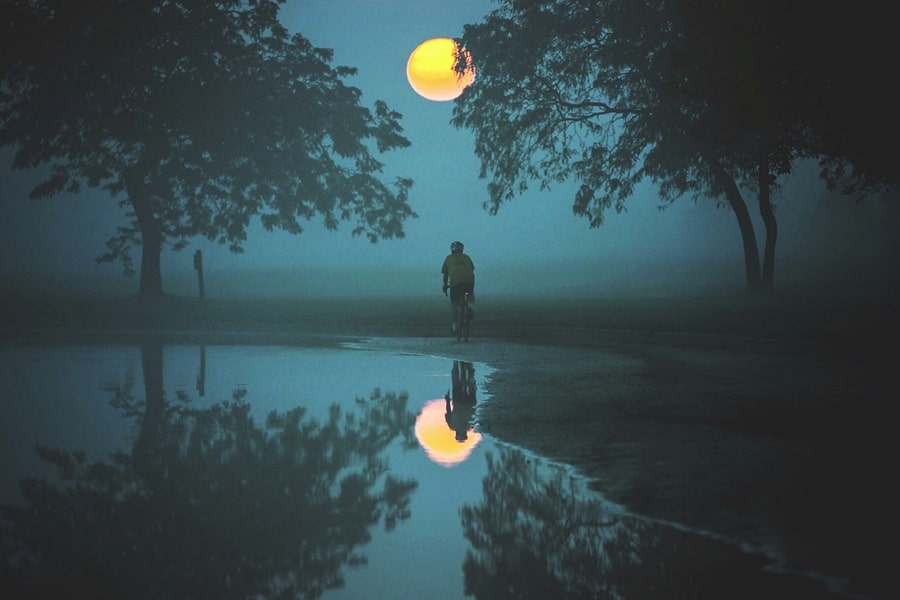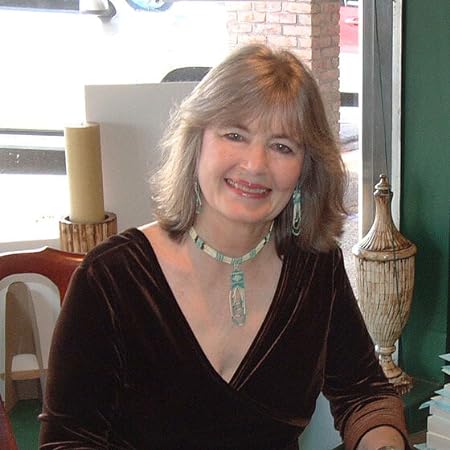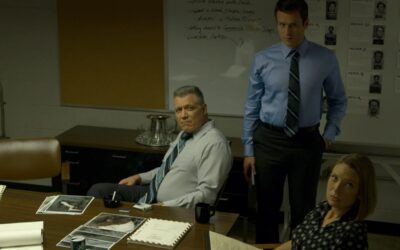
Crime Thriller Setting
Peggy Webb
Being Southern to the bone, I learned about the importance of place in a novel from the writings of a fellow Mississippi author who won the Pulitzer Prize for Literature, the great Eudora Welty.
In her essay “On Writing” which appears in her novel, The Eye of the Story: Selected Essays and Reviews, she states: “The truth is, fiction depends for its life on place. Location is the crossroads of circumstance, the proving ground of ‘What happened? Who’s here? Who’s coming’—and that is the heart’s field.”
Consider the blockbuster novel Mystic River that also became a hit movie. Author Dennis Lehane uses bodies of water not only as part of the setting, but in ways that impact the characters and the choices they make. In the first chapter Lehane introduces the reader to three young boys who are separated socially and economically by the Penitentiary Channel that splits the impoverished neighborhood called the Flats from the more affluent neighborhood in the Point.
In the first chapter Lehane uses the channel to create a sense of separation, a deep divide in the boyhood friendship that will carry into adulthood and throughout the rest of the novel.
“Jimmy and Dave came from the Flats, down by the Penitentiary Channel on the south side of Buckingham Avenue. It was only twelve blocks from Sean’s street, but the Devines were north of the Ave., part of the Point, and the Point and the Flats didn’t mix much.” –Mystic River, Dennis Lehane
The reader is immediately sucked into that small slice of neighborhood and into the lives of those three boys. There a sense of foreboding, a feeling that something is off-kilter with their friendship, and there will surely be trouble ahead.
Brooding over the characters and the surrounding city is Mystic River, described by Lehane as dark with greasy water, frequent wind, a sagging dock, and a weed-choked beach. The author’s choice of stark prose presents a forbidding picture. The river is a place where secrets can be buried. But as we learn later from a character’s point of view, the secrets leave behind a nagging fear that they will rise out of the water to destroy him. This section of the book is a perfect blending of setting, voice, and point of view to create a stellar reading experience.
In Mystic River the water symbolizes the passage of time and reinforces a favorite theme of William Faulkner, native Mississippian and winner of the Novel Prize for literature: “The past is never dead. It’s not even past.” –Requiem for a Nun, William Faulkner
Lehane’s finely detailed sense of place, written in prose so lyrical it sometimes reads like poetry, brings the story alive, pulls the reader along the banks of those dark waters and over the bridge that crosses them.
“He looked up at the underside of the bridge, everyone battling to either get into the city or out of it, everyone in an irritated flush… And for what? What did we line up for? Where did we expect to go? And why were we never as happy as we thought we would be once we got there?” –Mystic River, Dennis Lehane
Lehane’s novel is about friendship, betrayal, and the inescapable past, but setting is the heart, just as Eudora Welty said it would be. Lehane’s vivid portrayal of place was key to taking the reader inside the story and making the novel transcend the genre.
Another stunning example of setting used almost as a character is Truman Capote’s masterpiece, In Cold Blood. His non-fiction, true crime novel is so nuanced, so rich in detail that the reader is swept away by the winds blowing over the flat, endless fields in Kansas.
“… western Kansas winters are imprisoning, and usually frost on the fields and razory winds have altered the climate before Christmas. Some years back, snow had fallen on Christmas Eve and continued falling, and when Bobby set out the next morning for the Clutter property, a three-mile walk, he had had to fight through deep drifts.” –In Cold Blood, Truman Capote
Capote’s use of fictional techniques makes this account of the Clutter family killings read with the breathless intensity of fiction, much of it achieved by setting. Descriptions of the Clutter’s isolated farm create a dark and brooding image of a place waiting to be discovered by evil.
“… if the day was warm and sun-kindled, they stopped along the way and sat by the river, a snaky, slow-moving, brown piece of the Arkansas.” –In Cold Blood, Truman Capote
The river and the farm are inextricably bound in the character Bobby’s mind to his doomed love of Nancy Clutter, forbidden by her father and cut short by her murder. She had once told Bobby about seeing the Arkansas River in Colorado as “pure as drinking water,” vastly different from the same river on her farm.
“It stayed with Bobby, her memory of the river’s source, and since her death… Well, he couldn’t explain it, but whenever he looked at the Arkansas, it was for an instant transformed, and what he saw was not a muddy stream meandering across the Kansas plains, but what Nancy had described—a Colorado torrent, a chilly, crystal trout river speeding down a mountain valley. That was how Nancy has been: like young water—energetic, joyous.” –In Cold Blood, Truman Capote
Capote’s roots in the Deep South show in his exquisite use of place. He was born in New Orleans, Louisiana, into a troubled family who turned him over to his mother’s family in Monroeville, Alabama, where he was a neighbor and became a lifelong friend to Harper Lee (To Kill a Mockingbird). She stayed with him in Kansas for months doing initial research for the book, and accompanied him on his return trips over the next six years while the killers, Perry Edward Smith and Richard Eugene Hickock, were captured, brought to trial, and executed.
During this long research and writing process, Capote developed a strange and bizarre friendship with the killers, particularly the more complex of the two, Perry Smith, a man full of contradictions. “I thought he (Herb Clutter) was a very nice gentleman. I thought so right up to the moment I cut his throat.”
It is through Capote’s friendship with the killers and the locals of Holcombe, Kansas, that he gets his most stunning descriptions of place. Small details of the Clutter home after the murder put the reader on the scene. Nancy’s teddy bear “starring” from her bloody bed, her curtains open with sunlight pouring in, her purse lying on the kitchen floor, open, the kitchen, itself, devoid of dishes or food on the stove. The Clutters, who lived by routine, had not been down for breakfast in the large ranch house that rang with silence. Everything chilling, devoid of life.
Capotes stark details of death row contrast the victims’ once-vibrant and productive lives with the killers’ emptiness and futility. Hickcock’s cell had no window. He spent days, months, years in useless inactivity, mostly sleeping. Perry had a light bulb that burned eternally. He used the handle of a broom in his cell to unscrew the bulb. Though he often thought of breaking the glass and slitting his wrists, he lived on.
Both of them did. In the end, the they died as surely as their victims, Hickcok, “his face puffy, pallid as funeral lily, gleamed in the weak sunshine filtering through the bar-studded glass,” and Perry, “… a dwarfish boy-man…his childish feet, tilted, dangling.”
It’s telling that Capote ends In Cold Blood with the setting. Years after the murder, Al Dewey, the lead investigator, is at the cemetery cleaning the Clutters’ graves when an encounter with Nancy Clutter’s best friend resurrects memories that highlight the senseless nature of the killings.
“…he called after her as she disappeared down the path, a pretty girl in a hurry, her smooth hair swinging, shining—just such a young girl as Nancy might have been. Then, starting home, he walked toward the trees, and under them, leaving behind him the big sky, the whisper of wind voices in the wind-bent wheat.” – In Cold Blood, Truman Capote.
And there is it –once again–setting conveying theme, William Faulkner’s famous line from Requiem for a Nun: “The past is never dead. It’s not even past.”
About the Author
Peggy Webb is the USA Today Bestselling author of more than 100 novels in numerous genres, including the reader favorite crime thriller, Snow Brides, and the acclaimed literary fiction novel The Sweetest Hallelujah – written under her pen name Elaine Hussey and compared to Harper Lee’s To Kill a Mockingbird. Her current crime thrillers combine the addictive quality of Snow Brides with the lyrical writing of her literary works the late, great Pat Conroy called “astonishing.” Peggy is a former adjunct instructor of writing at Mississippi Sate University and has won numerous awards, including a prestigious Pioneer Award for creating the sub-genre of romantic comedy, numerous Reviewers Choice Awards, multiple WordWeaving Awards for Excellence, and a submission for the Pulitzer.
With more than three million books in print in numerous languages and countries, Peggy’s love of writing goes back to her roots in northeast Mississippi where she grew up on a farm and fell in love with words by reading everything she could get her hands on while sitting in her daddy’s hayloft. Peggy is an accomplished pianist and singer, and has starred in numerous roles in her local community theater, including M’Lynn (the Sally Field role) from Steel Magnolias, and The White Witch from The Lion, The Witch and The Wardrobe. Her love of theater and music shine through her novels .She is known for her chilling, filmic scenes, and her latest crime thriller features blues lyrics she composed and credited to one of her characters. She has co-written screenplays for two of her novels, and is active with the Film Festival in her hometown of Tupelo, Mississippi, which is also the birthplace of Elvis.
Peggy’s love of both writing and music is so strong, she says, “I hear the music of words in every novel I write.” You can hear her discuss the link between the two arts in her music videos on Facebook and visit her at her website.

More Crime Thriller Features
Campus Crime Thrillers
The Secret History, Brick, and Other Campus Crime Thrillers
Criminology
The Appeal of Criminology in Crime Thrillers
Unusual Settings in Crime Fiction
Crime Settings, From Space Stations to Remote Islands



